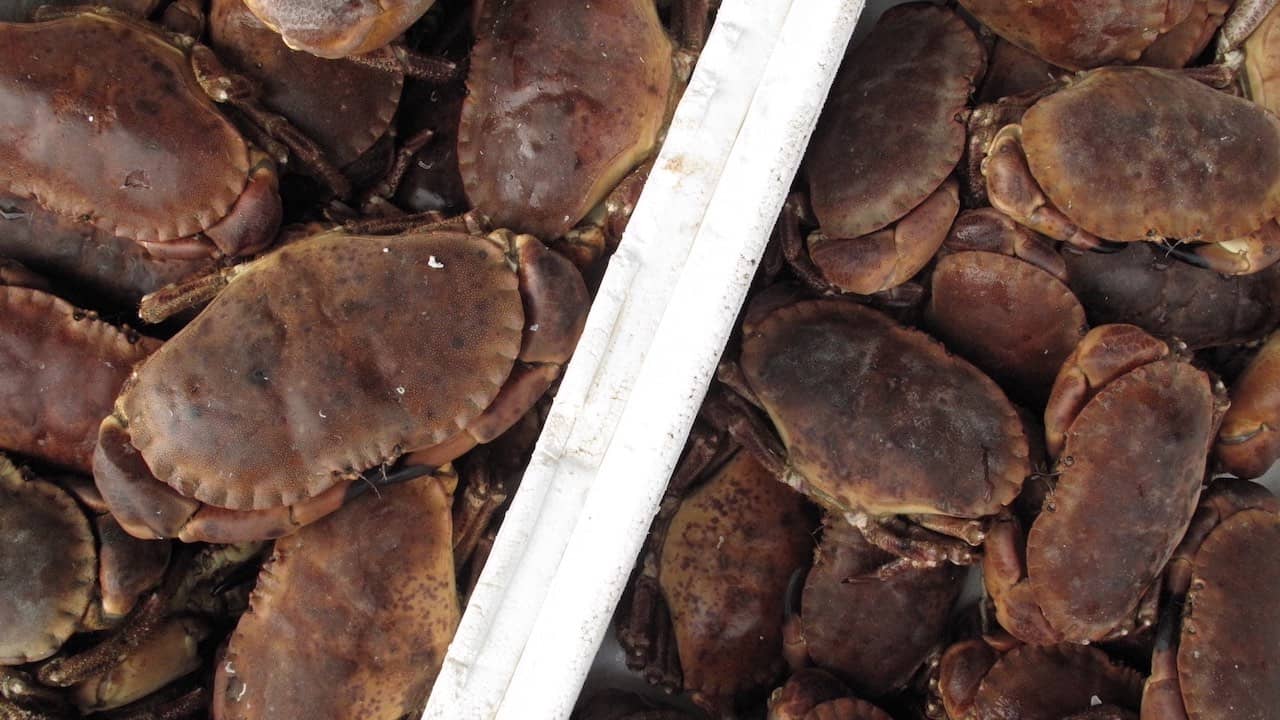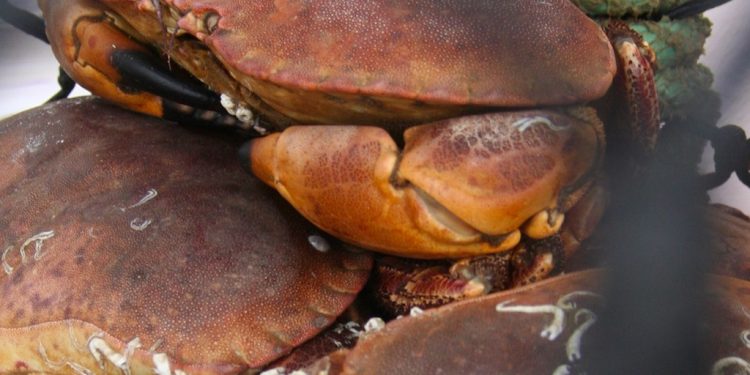Led by Bangor University and the industry-led Crab and Lobster Management Group (CMG), a new Fisheries Industry Science Partnership (FISP) funded project, the Filling the Gap – Crustacean FISP project, is working to close existing evidence gaps relating to brown crab and lobster fisheries in England and Wales.
There have for some time been concerns regarding increased fishing effort and, more recently, declining landings, especially of brown crab. Both non-quota species, significant gaps in our knowledge exist regarding these fisheries, and this was recognised in the prioritisation of the development of the recently published Fisheries Management Plan (FMP) for these species by Defra.

As part of their work to improve management of these species, several gaps – common to both English and Welsh stocks – have been identified by the CMG as critical to the development and implementation of assessments and harvest strategies that are responsive to changes in stock health.
Correspondingly, the existence of significant uncertainties and assumptions in current stock assessment methodologies, and the need to improve this evidence base for effective management has been explicitly recognised in the newly published (14 December) FMP for England.
Working directly with the sector, the Filling the Gap – Crustacean FISP project aims to address these common evidence gaps. Over the coming months, fisheries scientists and industry stakeholders will work together to tackle gaps around catch data, the size structure of lobster populations, seabed impacts of potting activities, and ways to define soft-shelled brown crab, in support of management plans for these species in England and Wales. The evidence gathered by the project will directly contribute to the development and delivery of these plans; and will mean they are based on the best available evidence to effectively support the long-term sustainability and economic profitability of the UK’s fleets.
‘Size data are especially important in assessments of crustacean species because they are very difficult to age, which excludes a whole suite of methods,’ said principal researcher Dr Natalie Hold of Bangor University.

‘However, there can be many factors which can affect the size of lobsters that turn up in pots. From the gear that is used, or the time of year, to the location. Therefore, using size data without any thought to how these factors may change across a time series, can lead to inaccurate assessment outputs. Understanding the changes in the fishery over time in terms of gear, location of fishing and how data collection has changed, will allow us to potentially correct for the influences of these factors and to use long time series of length data for assessments. The existing knowledge across the sector will be invaluable for this exercise, as will regular at sea research that can only take place in collaboration with industry.’
‘Brown crab and lobster are amongst the UK’s most valuable fisheries and are of particular importance to inshore fishers and coastal communities all around the country,’ commented Lewis Tattersall, Head of Fisheries Management at Seafish.
‘Over the last few years, our work with the industry-led Crab & Lobster Management Group – and the collaborative development of a fisheries management plan for these species in England – has really spotlighted some of the key concerns and evidence gaps that exist in these fisheries. This FISP funded project provides a great opportunity for fisheries scientists to work with fishers on the ground to help gain a better understanding of the challenges facing stocks and, ultimately, to improve our understanding of how best to manage them to ensure long-term sustainability. The project directly targets some of the key gaps identified by stakeholders, including accounting for all catches removed from the stock and the wider environmental impacts of fishing activity.’
The Crustacean FISP project will integrate research with knowledge from across the sector. As well as co-design of the research proposal with the CMG, over the past months Bangor University researchers have been speaking to people at sea and on the quayside [in Wales] to piece together a comprehensive picture of the sector, and how it has changed over time, particularly since the 1980s. As part of this, they are actively looking to speak to people involved or who have been involved in the sector, especially to expand the work into key English grounds.
‘Collaboration between the fishing industry and scientists is essential for a well-managed sustainable fishery. Drawing on the wealth of knowledge that individual fishermen and women have accumulated over the years, and weaving this alongside applied science will mean better fisheries management and, ultimately, healthier stocks and better catches in the long run,’ said Welsh lobsterman Sion Williams of the Llyn Pot Fishermen’s Association.
The researchers are looking for active crab and lobster fishermen in Wales and England to facilitate observer days from now until August 2024. During these trips researchers will measure catches, record string locations, and gather environmental data via loggers attached to pots and Olex bottom hardness mappers. The researchers are using the Olex plotters as a proxy for habitat and would be interested in working with fishermen or women who have these installed.
The team are also interested in using cameras to record size and sex of crabs and lobsters outside of observer days, to enable a full representation of the variation in catch over time and geographic areas. Any data collected will be treated as commercially sensitive and confidential, and none will be published or shared that will allow identification of any fisher’s individual data. Primarily, data will be used to model how aspects such as size of animals vary with environmental features such as the seafloor habitat, depth, distance from shore.









